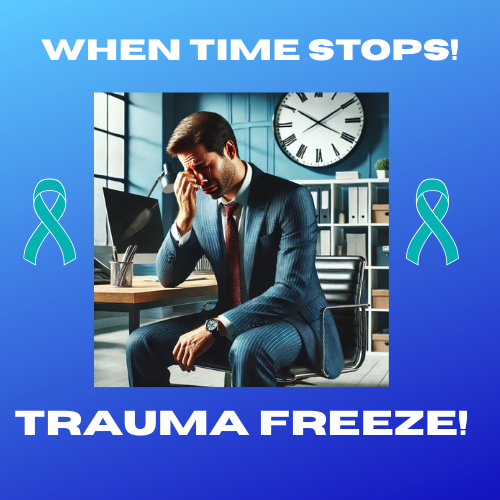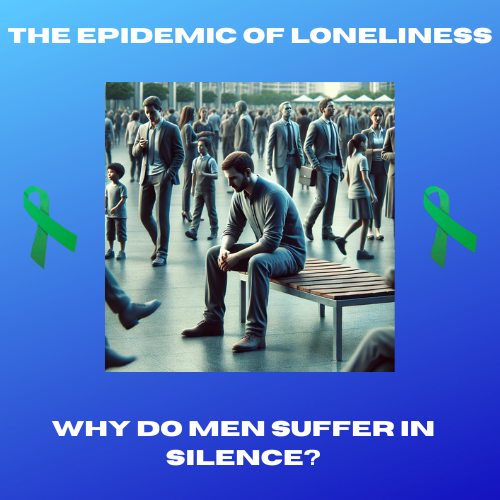Concussions, TBI, C-PTSD, and PTSD
Here is what you need to know about TBIs and PTSD
My client, Robert, sits in his car after another failed job interview, his hands trembling as he grips the steering wheel.
Three years ago, he was a confident and booming Special Forces operator, beloved by his comrades. Then came the car accident, the one that gave him a concussion and changed everything.
But what Robert doesn’t realize yet is that his struggles aren’t just from the traumatic brain injury.
The combat missions, as well as the childhood abuse he survived decades earlier, left invisible scars that are now colliding with his brain injury in ways that make healing feel impossible.
He describes his mind as “broken in two different ways,” and he’s not wrong.
If you’re reading this, you might recognize yourself in Robert’s story. Perhaps you’ve suffered a concussion or traumatic brain injury, and you’re also carrying the weight of PTSD or Complex PTSD.
Maybe you feel like your brain is fighting a war on multiple fronts, and no one seems to understand the unique hell of having both conditions.
You’re not alone. And more importantly, you’re not broken beyond repair.
The Perfect Storm: When Brain Injury Meets Trauma
Traumatic brain injuries and PTSD don’t just coexist; they create a complex dance of symptoms that can amplify each other in devastating ways.
Your brain, already working overtime to heal from physical damage, is simultaneously trying to process and cope with psychological trauma. It’s like trying to rebuild a house while it’s still on fire.
Here’s what’s happening in your remarkable, resilient brain:
The TBI is disrupting your brain’s hardware. The physical impact damaged neural pathways, affecting everything from memory and attention to emotional regulation. Your brain’s communication system, the delicate network that helps you think clearly, process emotions, and maintain balance, has been disrupted.
The PTSD is overwhelming your brain’s software. Whether it’s from a single traumatic event or the complex trauma of C-PTSD from repeated abuse, your brain’s alarm system is stuck in the “on” position. Your amygdala, the brain’s fear center, is hypervigilant, scanning for threats that may not exist while flooding your system with stress hormones.
When these two conditions collide, they create symptoms that seem impossible to untangle:
· Memory problems that feel more severe than either condition alone
· Emotional dysregulation that swings from numbness to overwhelming intensity
· Cognitive fatigue that makes the simplest tasks feel monumental
· Sleep disturbances that leave you exhausted and unable to heal
· Social withdrawal that deepens feelings of isolation and shame
The Invisible Disability Double-Bind
What makes this combination particularly cruel is that both conditions are largely invisible. You look fine on the outside, while your internal world feels chaotic. Well-meaning friends tell you to “just think positive” or “get over it,” not understanding that your brain is literally rewiring itself while simultaneously trying to process unresolved trauma.
· You might find yourself caught in an exhausting cycle:
· Using all your energy to appear “normal” in public
· Crashing completely when you’re alone
· Feeling guilty for not being the person you used to be
· Questioning whether you’re “making it up” because others can’t see your struggles
Let me be clear: Your pain is real. Your struggles are valid. You are not making this up.
The Neuroscience of Hope: Your Brain Can Heal
Here’s the truth that every medical textbook should highlight on the first page: Your brain is neuroplastic. This isn’t just clinical jargon—it’s your lifeline. Neuroplasticity means your brain can form new neural connections, reroute around damaged areas, and literally rewire itself for healing.
Even with a TBI. Even with PTSD. Even with both.
The same brain that can be injured and traumatized is also capable of remarkable adaptation and recovery. New neural pathways can be forged. Healthy coping mechanisms can be strengthened. The overwhelming flood of trauma responses can be regulated.
This doesn’t mean healing is easy or quick. It means healing is possible.
The Integrated Path Forward
Treating TBI and PTSD together requires a different approach than addressing either condition alone. You need practitioners who understand how these conditions interact and exacerbate one another. Here’s what effective treatment often includes:
Trauma-Informed Brain Injury Rehabilitation: This means addressing the TBI symptoms while being mindful of how trauma affects your ability to engage in treatment. It recognizes that traditional cognitive rehabilitation might need to be modified for someone with PTSD.
Somatic Approaches: Your body holds trauma just as much as your mind does. Therapies like EMDR, somatic experiencing, and neurofeedback can help process trauma while supporting brain healing.
Nervous System Regulation: Learning to calm your activated nervous system isn’t just helpful for PTSD; it also creates the optimal conditions for brain healing. When your body isn’t in constant fight-or-flight mode, your brain can dedicate more resources to repair and growth.
Cognitive Rehabilitation with Trauma Awareness: Traditional brain training exercises can be helpful, but they work best when combined with an understanding of how trauma affects learning and memory.
What You Can Do Right Now
While you’re finding the proper professional support, there are steps you can take to support your healing:
Create Safety First: Both TBI and PTSD recovery require a sense of safety. This may involve establishing routines, creating calm spaces, or setting boundaries with individuals who don’t support your healing.
Honor Your Energy: Your brain is doing double duty. Rest isn’t lazy, it’s essential medicine. Listen to your body and brain and permit yourself to pace your activities.
Find Your Tribe: Connect with others who understand your unique experience. Online communities for TBI survivors and PTSD warriors can provide validation and practical support.
Celebrate Small Wins: Recovery isn’t a linear process. Some days will be more complex than others. Notice and celebrate the minor improvements—they’re evidence that your brain is healing.
A Message for the Helpers
If you’re reading this because someone you love is struggling with both TBI and PTSD, please understand they’re not choosing to be different. They’re not being dramatic.
Their brain are working incredibly hard to heal from multiple types of damage simultaneously.
Your patience, understanding, and willingness to learn about their conditions can be powerful medicine. Sometimes the most healing thing you can do is believe them when they tell you how they’re feeling.
The Science of Resilience
Research is finally catching up to what survivors have always known: human beings are remarkably resilient.
Studies on post-traumatic growth show that people can emerge from trauma not just healed, but stronger and more compassionate than before.
The same is true for TBI recovery. While the brain that emerges from injury may be different from the one before, it can also be more creative, more empathetic, and more attuned to what truly matters.
You are not broken. You are healing. And healing, while not always linear or quick, is always possible.
Your Brain, Your Journey, Your Hope
Robert, the veteran from our opening story, is now three years into his healing journey.
He had to leave his high-stress position, but he’s found new ways to make a difference, writing about his experience and helping others navigate the complex path of dual recovery.
His brain looks different on scans than it did before his accident, and his nervous system still occasionally gets activated by unexpected triggers.
However, he has also developed a depth of self-compassion that he had never possessed before. He’s learned to listen to his body’s wisdom.
He’s discovered the strength he didn’t know he possessed. He’s not the same person he was before his injuries; he’s someone who’s been forged by fire and emerged with a different kind of brilliance.
Your journey may be different from Robert’s, but your capacity for healing is just as real. Your brain, even if injured or traumatized, is still capable of remarkable things. It can learn new ways to process emotions, form new memories, and create new connections.
The Call to Action
If this article resonates with you, I want you to do three things:
Please share it. Someone in your network is struggling in silence with these invisible injuries. Let them know they’re not alone.
Seek help. You deserve support from practitioners who understand the complex interplay between brain injury and trauma. Don’t settle for providers who dismiss or minimize your experience.
Don’t give up. Your healing journey may be longer and more complex than others, but it’s also uniquely yours. Every small step forward is rewiring your brain for resilience.
Your brain has already survived trauma and injury. That makes it incredibly strong, not irreparably broken. Trust in its capacity to heal. Trust in your capacity to heal.
Because healing isn’t just possible, it’s your birthright.
I have permission to share Robert’s story!
If you or someone you know is struggling with thoughts of self-harm, please reach out to the National Suicide Prevention Lifeline or contact your local emergency services. You matter, and help is available.
©2025 www.soundthetrumpet.org









